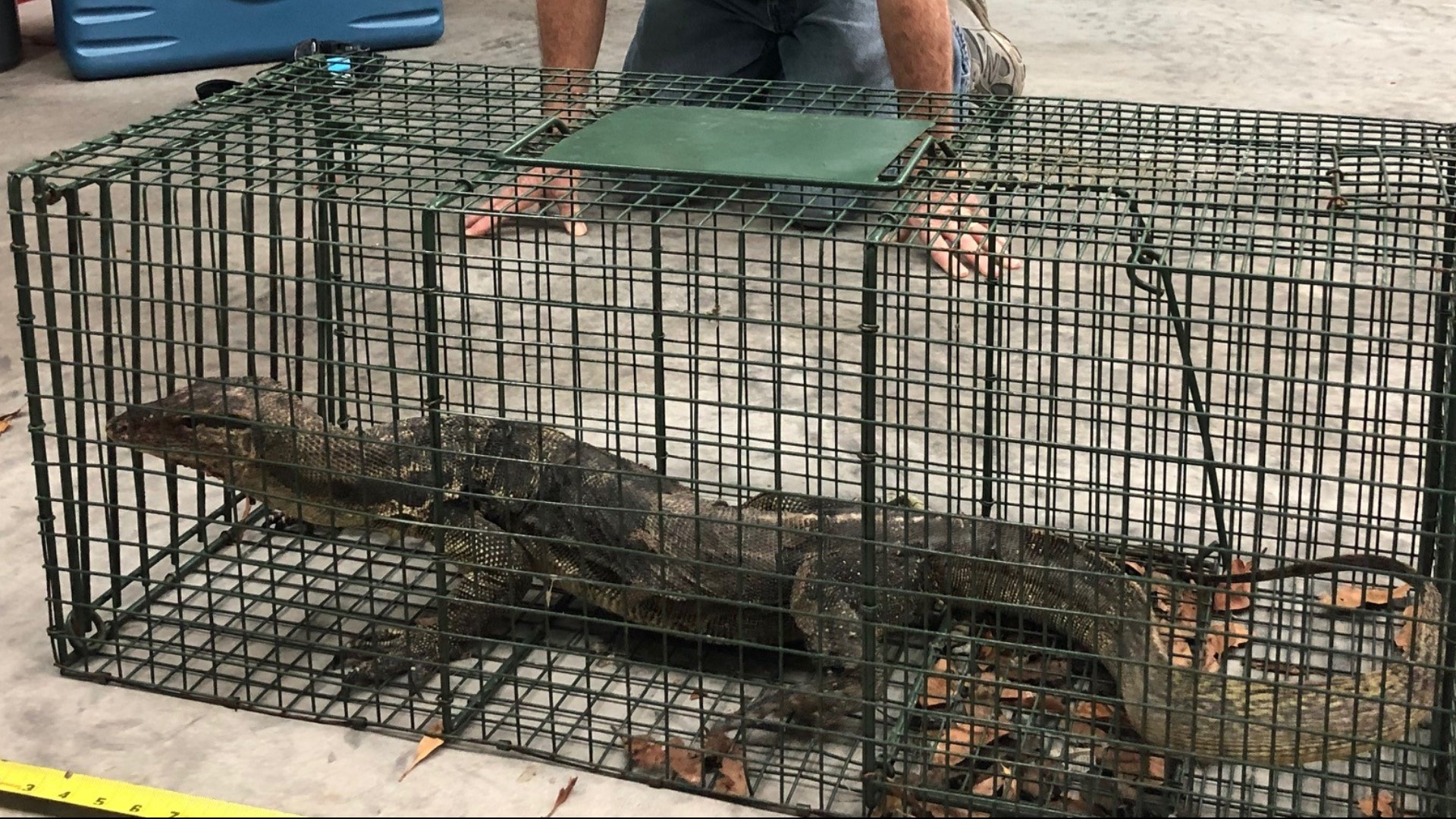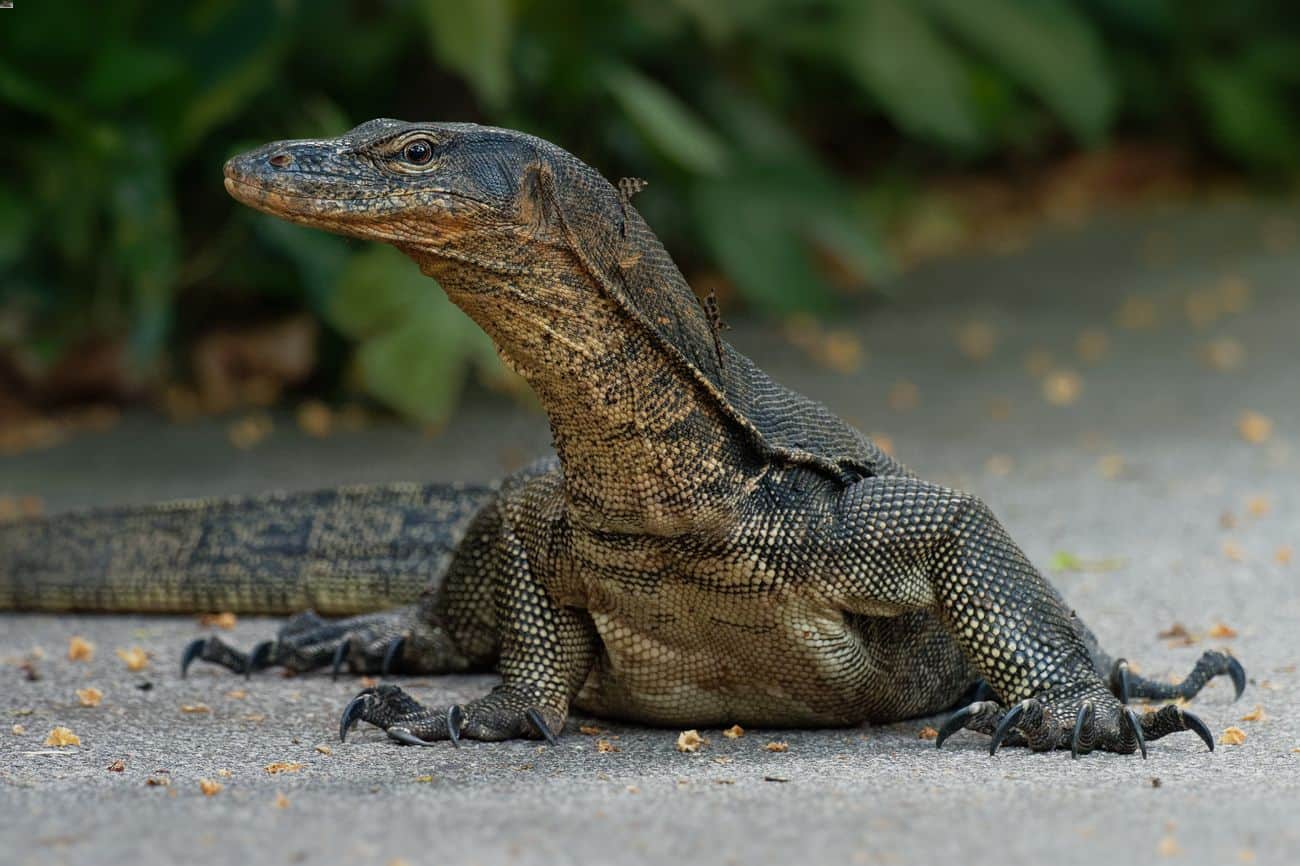Habitat and Distribution

Asian water monitor florida – The Asian water monitor, a large semi-aquatic lizard, has established a presence in Florida, occupying a variety of habitats within the state.
The Asian water monitor, a formidable reptile native to Southeast Asia, has made an unwelcome appearance in Florida. Its voracious appetite and aggressive nature pose a threat to local ecosystems. However, a recent study led by ceo of chipotle has shed light on the potential benefits of this invasive species.
Researchers discovered that the monitor’s presence has led to a decrease in the population of feral pigs, which are known to cause significant damage to crops and natural habitats. The findings suggest that the Asian water monitor may play a paradoxical role in Florida’s delicate ecosystem.
Habitat Preferences
Asian water monitors prefer warm, humid environments with access to water. They are commonly found in wetlands, swamps, marshes, and riverine habitats. These areas provide them with ample shelter, food, and opportunities for thermoregulation.
Asian water monitors are large lizards that can grow up to 10 feet long. They are native to Southeast Asia, but have been introduced to other parts of the world, including Florida. In the US, Asian water monitors are considered an invasive species and are a threat to native wildlife.
They are also known to attack humans, so it is important to be aware of them if you live in an area where they are found. Yellowstone cast married , Kevin Costner and Christine Baumgartner, are both avid outdoors enthusiasts and have spoken out about the importance of protecting wildlife.
They have also worked with organizations to help protect endangered species.
Specific habitat features that attract Asian water monitors include dense vegetation, fallen logs, and overhanging branches. These elements offer cover from predators and harsh weather conditions. Additionally, they seek out areas with abundant prey, such as frogs, fish, and small mammals.
Geographic Range and Distribution
The Asian water monitor’s distribution in Florida is primarily concentrated in the southern and central regions of the state, including the Everglades, Lake Okeechobee, and the Kissimmee River basin.
Their range is expanding northward, with isolated populations reported in northern Florida. The species’ ability to adapt to various habitats, including human-modified landscapes, has contributed to its successful establishment and dispersal in the state.
Environmental Factors, Asian water monitor florida
Several environmental factors influence the habitat selection of Asian water monitors in Florida. These include:
- Water Availability: Proximity to water is crucial for the species’ survival, as they require access to water for drinking, thermoregulation, and hunting.
- Temperature: Asian water monitors are ectothermic, meaning they rely on external heat sources to regulate their body temperature. They prefer warm environments and often bask in the sun or on warm surfaces to raise their body temperature.
- Shelter and Cover: Dense vegetation, fallen logs, and overhanging branches provide shelter from predators, harsh weather conditions, and excessive sunlight.
- Prey Abundance: Areas with abundant prey, such as frogs, fish, and small mammals, are preferred by Asian water monitors.
Physical Characteristics and Behavior: Asian Water Monitor Florida
The Asian water monitor is a large lizard native to Southeast Asia. It is a member of the monitor lizard family, which is known for its large size and predatory nature. Asian water monitors can grow to be over 10 feet long and weigh up to 150 pounds. They have a long, slender body with a long tail. Their skin is covered in scales, and they have a distinctive pattern of black and yellow stripes. Asian water monitors are also known for their large heads and powerful jaws.
Asian water monitors are ambush predators that feed on a variety of animals, including rodents, birds, fish, and even small mammals. They are also known to scavenge on carrion. Asian water monitors are solitary animals that typically only come together to mate. They are territorial and will defend their territory from other monitors.
Adaptations
Asian water monitors have a number of adaptations that allow them to survive in their environment. Their long, slender bodies allow them to move quickly through the water. Their powerful jaws and sharp teeth allow them to kill and eat their prey. Their scales provide them with protection from predators and the elements. Asian water monitors also have a unique respiratory system that allows them to breathe underwater for short periods of time.
Impact on Ecosystem and Human Interactions

The introduction of the Asian water monitor to Florida has had significant implications for the local ecosystem and human populations.
Interactions with Native Species
The Asian water monitor is a voracious predator, feeding on a wide range of native species, including fish, reptiles, amphibians, and birds. Its presence has disrupted the delicate balance of the Florida ecosystem, leading to declines in native wildlife populations.
Habitat Encroachment
Asian water monitors are highly adaptable and have established themselves in various habitats throughout Florida, including wetlands, forests, and urban areas. Their ability to climb trees and walls allows them to access human dwellings, where they can become a nuisance or even a threat.
Potential Conflicts with Humans
While Asian water monitors are not typically aggressive towards humans, they have been known to bite when threatened. Their large size and powerful jaws can inflict serious injuries. Additionally, they can carry diseases that can be transmitted to humans through bites or contact with their saliva.
Recommendations for Management
To mitigate the negative impacts of the Asian water monitor in Florida, several management strategies have been proposed:
- Population control through trapping and removal programs
- Public education to raise awareness about the risks associated with the species
- Habitat modification to reduce access to human dwellings and food sources
By implementing these measures, we can minimize the impact of the Asian water monitor on the Florida ecosystem and protect human populations from potential conflicts.
The Asian water monitor lizard, found in Florida’s wetlands, is a fascinating creature. However, for those struggling financially, news of changes in supplemental security income ( supplemental security income news ) can be crucial. Despite the challenges, the resilience of the Asian water monitor in its habitat mirrors the strength of those facing adversity.
In the balmy wetlands of Florida, the formidable Asian water monitor roams freely, its iridescent scales glistening under the subtropical sun. While this apex predator reigns over its aquatic domain, on the human side of the spectrum, news of supplemental security income ripples through the communities it inhabits.
Amidst the mangroves and marshes, the struggle for financial security echoes in the background, reminding us of the intertwined nature of human and wildlife concerns in the tapestry of our shared environment.
The Asian water monitor is a formidable predator found in Florida’s wetlands. However, recent news of Southwest Airlines’ flight cancellations has raised concerns among travelers. Despite these disruptions, the Asian water monitor continues to thrive in its watery habitat, reminding us of the resilience of nature even amidst human challenges.